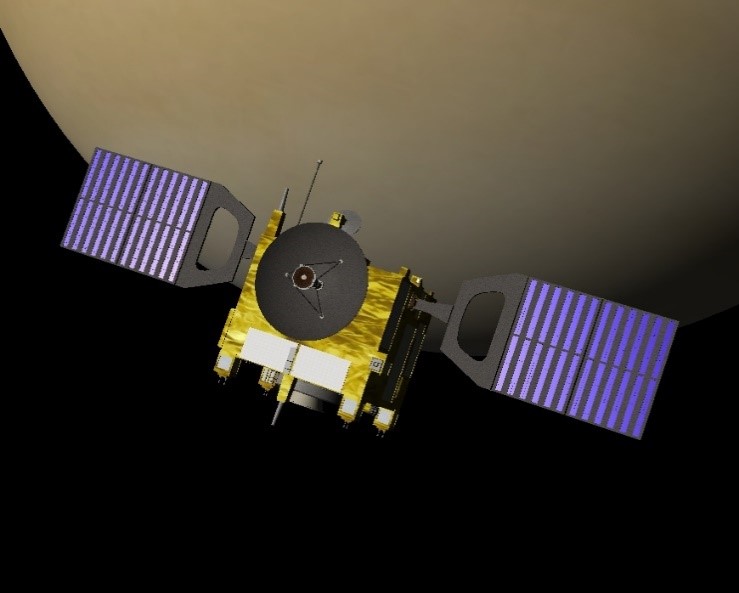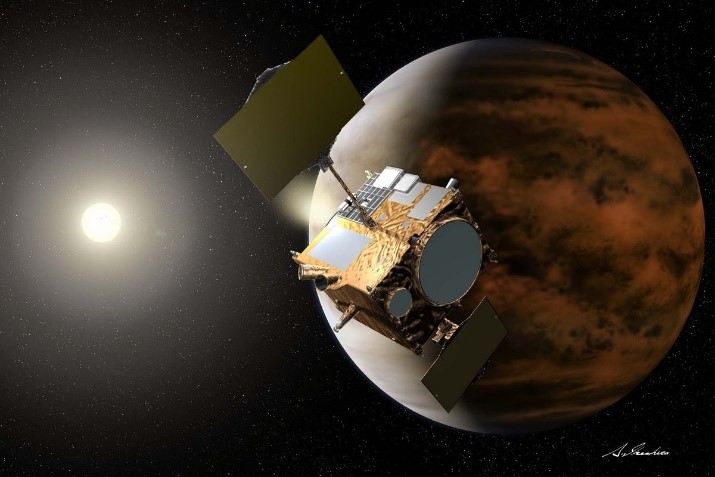With the end of Magellan, a page of the exploration of Venus turns. The USSR collapsed and space exploration was over. Only a few missions are sent to Mars without success. On the American side, efforts are focused on new targets such as asteroids but especially on Mars. Since 1992, 13 Nasa probes have been sent to the red planet and another is in development. During the same period no American mission is dedicated to Venus. However, due to its high speed and mass, the planet is very effective at providing gravitational assistance. This is why several probes dedicated to the study of Mercury, the Sun or gas giants have flown over Venus.
In Europe, ESA already has a successful mission to Halley’s comet in 1985 and a participation in the US Cassini mission to Saturn. In the early 2000s, she wanted to develop her own skill in the exploration of the solar system. To this end, three major exploration missions are being prepared. They share a common basis for reducing development costs. The first mission is Mars Express launched in 2003 which continues to study Mars today. The second is Rosetta, which was launched in 2004 but does not reach its final goal. Then it was comet 67P, only 10 years later for 2 years of observation.

The last mission, launched from the Baikonur Cosmodrome by a Soyuz rocket on November 9, 2005, marks the return of Venusian exploration. Named Venus Express, it consists of an orbiter that carries many infrared and ultraviolet cameras that can monitor different layers of the atmosphere. Constant observation of such a complex atmosphere allows a much better understanding of how it works and the consequences of the greenhouse effect. In 2014 to complete the mission, Venus Express descended its orbit to pass through the upper layers of its atmosphere. This has helped to collect air-braking data that will reduce the need for propellants for future missions.

Venus Express was to be joined before the end of its mission by a Japanese probe with similar characteristics and objectives. Like Europe, Japanese interplanetary exploration began during the passage of Halley’s comet in 1985. It continued with a Mars mission (a failure), lunar missions and asteroid exploration. For Venus, the Akatsuki probe was launched by an H-IIA on May 20, 2010. Arriving close to the planet, it began braking into orbit when the engine failed. Too fast, the probe was launched into a heliocentric orbit. The un anticipated trajectory allows a new flyby of Venus in December 2015. Japanese engineers were able to reprogram the probe for this second chance. They begin by purging the propellants of the main engine that has become unusable and then making trajectory corrections to get as close as possible to the objective. Five years to the day after the first attempt, Akatsuki manages to get into orbit around Venus only with its low-thrust control engines. The probe is far from being in the optimal orbit for which it was planned but begins the study of the atmosphere. These results followed those provided by Venus Express, which had plunged into the atmosphere a year earlier and allowed for a continuity of measurements.
